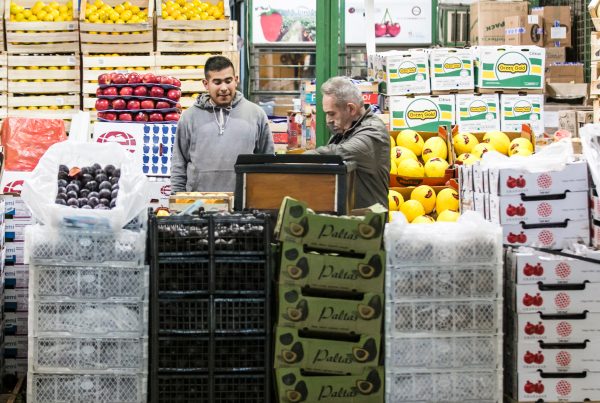Newsletter 140 – 09.20.2022
The pandemic shook the world and brought the health issue to light. There is no doubt that it has become a priority issue, be it eating healthy, doing outdoor activities or encouraging sports. After two years, we wonder if these trends were maintained or not. Are we really eating healthier? What happened to the fruits? Has the consumer boom continued?
Post-Pandemic
Recent research on consumption clearly shows that the health issue remains as a priority. All the groups of consumers consulted commented that the issue of health was installed in their lives and that customs and habits have changed. Parents especially expressed concern about passing those habits on to their children. As an example, within the changes that they commented, there are stopping eating ultra-processed and junk food; going more frequently to the gym, reducing the consumption of cookies or candy, preparing juices instead of soft drinks, etc. They agreed that in this change the fruits fulfilled a fundamental role. They expressed that they tried to eat more fruits and vegetables for their children, when they had a craving for something sweet they opted for fruits, instead of cookies or bread, trying to incorporate at least one fruit per day.
Fruits are strongly associated with health. It is a popular wisdom that fruit is healthy, that is not disputed. They have a good image in society.
Evolution of fruit consumption
This shift towards health and the good intentions of those consulted should be reflected in an increase in fruit sales. This occurred during the first part of the pandemic. Sales doubled to tripled, despite fruit prices frequently being higher than usual. In other words, more fruit was bought, despite the higher price. But the pandemic effect was short-lived, barely a year. The year after the outbreak of the pandemic, consumption normalized. It returned to the pre-pandemic situation, and that is more than worrying. Most fruits have recorded a constant drop in consumption for years.
Obviously perception does not match reality. The drop in fruit consumption within a context of shifting towards health is serious and requires a more exhaustive analysis. Within the fruits there are some that have increased their consumption; such is the case of avocados, blueberries and strawberries. They are fruits that adapt very well to the current rhythm of life, due to their ease of eating and their excellent flavor. But most importantly, they are fashionable. They have a healthy image and are highly promoted on social networks. They fall into the group of other products that are in fashion, such as almonds, salmon, legumes, etc. Therefore it is clear that if the pocket allows it, it has turned to the consumption of these products. Whether or not it is healthier than eating a simple apple or orange, we will know it only over time.
Fall in consumption
It should be clarified that the decrease in consumption is not an isolated post-pandemic event, but is included in the negative trend of many several years ago. In the last 10 years, fruit consumption in Argentina fell by 10%, from 51 kg/person/year in 2010 to 46 kg/person/year in 2020.
There are two factors here that are very worrying. On the one hand, the current level of consumption, this is half of what is recommended by health agencies. The other is that there is no awareness of low consumption. Almost half of those surveyed considered that they ate enough. Even the mothers' responses reflected it: "I try to get the boys to eat one piece of fruit a day." That is insufficient consumption. Health agencies recommend 5 servings of fruits+vegetables per day. Neither health professionals nor public bodies are aware of low consumption.
Factors that affect consumption
- Comfort: important factor; people want to eat fruit, but at the decision-making moment they opt for a yogurt or dessert because it is easier. It is also decisive when choosing between fruits, in general the most easy-to-eat ones win, such as bananas, berries, grapes and tangerines. Among the losers are oranges, pears, peaches or grapefruit.
- They do not know if what they buy is tasty most consumers do not have a selection criterion. They don't know which the best fruit is; they don't know how to choose it. They sit in front of "a lottery", knowing just by consuming them if they bought something tasty. If they buy in greengrocers, they consult the greengrocer. He is the key person when choosing a fruit. The phrases "which one do you recommend" "give me the sweetest", "give me the one from last week, which was very tasty" are common.
- Bad experiences they bought a fruit they didn't like, so they stop buying it for at least 1-2 weeks.
- Taste / Health: fruits are consumed because they are liked, that is, for their taste and pleasure in consumption. The health issue takes a backseat. Nobody consumes something because it is healthy, but because they like it. Therefore, the taste and previous experience in this regard is the deciding factor at the time of making a purchase.
- It is not considered an essential food: there are foods that parents consider essential in raising their children. Such is the case with milk. Every parent will ensure that his children consume milk every day. They consider it as a parent’s duty. Such is not the case with fruits.
- It has no marketing: foods from large industries (dairy, sweets, baked goods) are constantly promoted. The fruit, which is generally produced and marketed by relatively small companies, is not usually dedicated to marketing. Advertising campaigns are few.
- There is little renewal: today's consumer likes to innovate; Try something different, new. Industries use this tactic to expand their clientele. Such is not the case with fruits, there are few innovations. In addition, when a new variety or type comes onto the market, it is not usually promoted or sufficiently differentiated from the traditional ones.
- Returning to trips, going to restaurants there is a strong shift towards enjoyment that was prohibited during the pandemic. He went back to traveling and eating in restaurants. Hotels and restaurants incorporate few fruits in their menus, so that the greatest consumption occurs in homes.
Reduce health spending
It is essential that the fruit sector, as well as public entities, (especially those related to health) become aware of the current serious situation. It would be very good if health professionals, but also from other sectors, such as educators, cooks, etc. return to rescue and value the fruits. National health spending is very high. A greater consumption of fruit would help prevent the diseases that are of greatest concern (obesity, diabetes, cancer, etc.) and would help reduce the current high cost.







